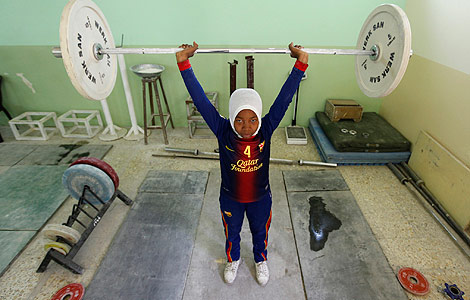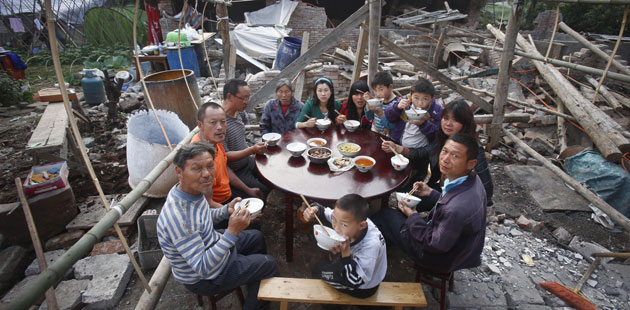|
||||||||

California's earthquake early-warning system passed a major test last week, when a sensor alerted scientists and citizens that a magnitude 4.7-magnitude quake was about to hit Southern California in 30 seconds.
At the quake's epicenter in the semi-desert town of Anza, hundreds of sensors embedded in the ground sent an alert to seismologists at the California Institute of Technology, or Caltech, in Pasadena, 140 miles (225 kilometers) away.
The March 11 quake didn't injure anyone or damage property. But it drew attention not only locally, but from Chinese media as well.
Caltech's Kate Hutton confirmed that the earthquake-warning system worked. She explained to Xinhua News Agency that the system measures a temblor's P-wave - high-speed seismic motion through a defined space that has relatively weak destructive power - to help seismologists determine a forthcoming quake's location, magnitude and duration.
The Los Angeles Times reported that the system initially overestimated the quake's magnitude at 5.2. But seismologist Susan Hough of the US Geological Survey said the main job of an early-warning system is to alert people to a coming quake, not to precisely predict the energy it releases.
The system has been in place for over a year, and the Anza quake offered a rare chance to test it.
China has been keeping a close eye on development of earthquake-forecasting technology around the world since a magnitude-8.0 quake in Sichuan province killed an estimated 69,000 people in 2008.
The country also plans to deploy a nationwide earthquake monitoring and warning system within five years. Plans for the system were introduced in 2009 and are expected to be verified this month, according to an official of the China Earthquake Administration who declined to be identified by name. The system is intended to detect quakes and notify people within seconds before they hit, the official said.
The project, expected to cost 2 billion yuan ($322 million), calls for establishing some 5,000 monitoring stations across China. A pilot program of about 100 stations is now underway in the southeastern province of Fujian and has shown promise.
China has been trying to hasten deployment of an early-warning system since the deadly Sichuan quake nearly five years ago.
On Feb 19, a magnitude-4.9 quake would have been little more than a footnote in Chinese seismological records. Though it gave the Yunnan province city of Zhaotong only a small morning jolt and caused no damage, the quake was significant because it coincided with an advance in the country's early-warning effort.
Before that seismic event, a system devised by the Chengdu Disaster Prevention Research Institute and the Zhaotong Earthquake Administration successfully sent warnings to the affected area. The system also successfully warned locals of a 4.5-magnitude quake that occurred in Yibin, a city in Sichuan province, on the same day.
Chinese authorities have been slower than those in the US to move toward a warning system.
As the site of most of the biggest quakes in US history, California is also the focus of federal and state government efforts to design and deploy early-warning mechanisms. According to the USGS-maintained Uniform California Earthquake Rupture Forecast, the state has a 99.7 percent chance of being struck by a quake of magnitude 6.7 or stronger during the next 30 years. The likelihood of a quake of magnitude 7.5 or stronger during that time is 46 percent. Such a quake is more than twice as likely to occur in the southern half of the state (37 percent) than in the northern half (15 percent)
Despite the ever-present threat, earthquake fears appear to have little or no effect on the state's high-priced real estate or on Californians' quality of life.
Home buyers can get check to see if their new dwelling is up to code in terms of earthquake-damage features. Most houses are wood-frame, which stand a better chance of withstanding a quake.
Children in California begin practicing earthquake drills from preschool. At some elementary schools, parents are asked to prepare food for a two-day emergency.
Contact the writer at chenjia@chinadailyusa.com
Most Viewed
Editor's Picks

|

|

|

|

|

|
Today's Top News
US urged not to take sides over Diaoyu Islands
Detention of petitioners denounced
Lawyers get an advocate
Pentagon accusation on China's military rejected
Foster homes for homeless children
Public hearing to discuss taxi fare increase
21 Party officials, SOE managers disciplined
Clarity on tax evasion needed, lawmakers told
US Weekly

|

|
















